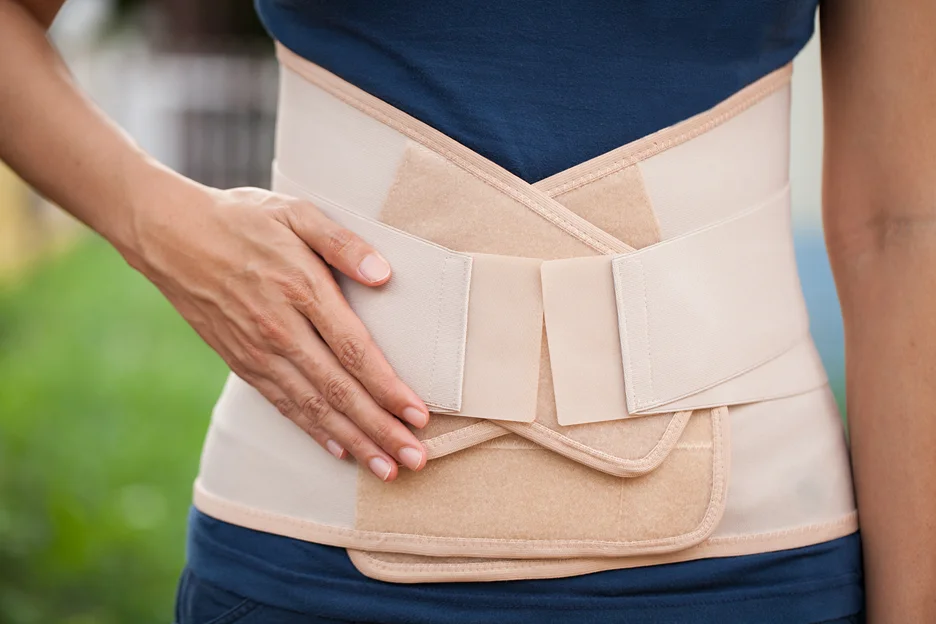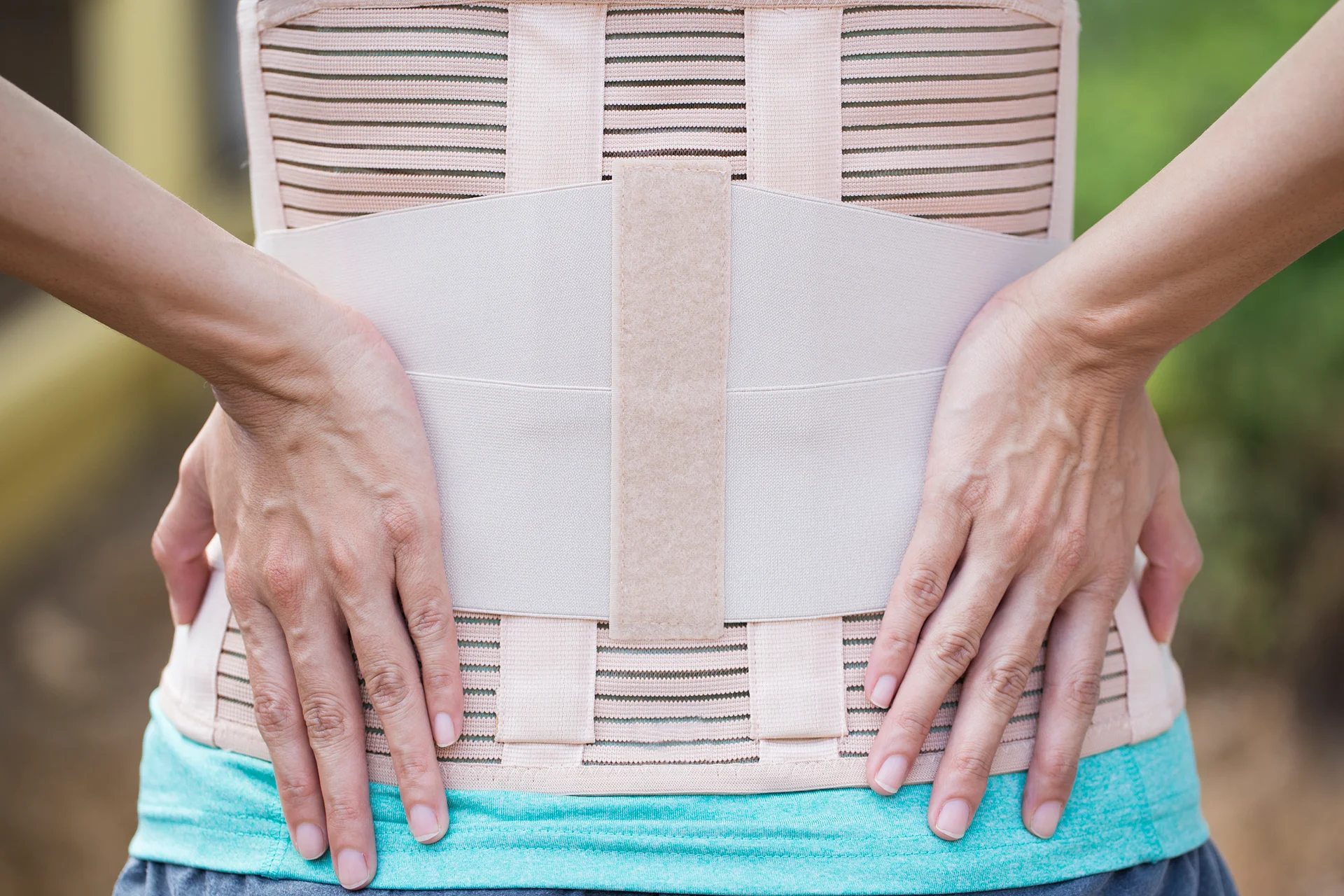Lower back pain affects over a vast majority of adults at some point in their life. It can suddenly arise during everyday activities, causing aches, stiffness, and sharp pains that disrupt plans and enjoyment.
While treatments like physical therapy and medication help, wearing a supportive back brace is a simple, non-invasive way to find relief. Braces can ease discomfort by improving posture, restricting harmful movements, compressing sore muscles, and more.
This guide will show how the right brace design and fit can reduce lower back pain and restore mobility.
What Leads to Lower Back Pain That May Require a Brace?
Lower back pain can stem from a number of causes:
Poor Posture and Ergonomics
Leaning forward at your desk for long periods and other poor postural habits put a strain on the lower back muscles and spine. Poor posture and improper body mechanics put excessive strain on the back over time, leading to physiological impairments.
Injuries
Twisting awkwardly, lifting something too heavy, a sudden fall – all can wrench the back and cause strained muscles, bulging discs, compression fractures, and more. Sports injuries are a common culprit as well.
Degenerative Disc Disease
As we age, the discs between the vertebrae lose flexibility and cushioning capacity. This degenerative disc disease causes back stiffness and achiness, especially with bending and movement.
Arthritis
Osteoarthritis in the lower spine leads to painful inflammation as the cartilage deteriorates in the facet joints. Bone spurs can also impinge on nerves.
Pregnancy
Carrying extra weight in the abdomen shifts the center of gravity forward, straining the back. Postpartum back pain is common as well.
Obesity
The takeaway? There are many reasons you may be experiencing lower back pain that a supportive, stabilizing back brace can help alleviate.
How Can a Back Brace Ease Lower Back Discomfort?
Wearing a back brace offers many beneficial effects including:
- Improved Posture – Gentle constriction reminds you to stand and sit tall, taking pressure off the lower back. However, do note that research also suggests back braces may cause weakness or atrophy of back muscles over time, potentially worsening posture.
- Lumbar Support – Both rigid and non-rigid panels and plastic or metal stays provide a lifting effect for the inward curve of the lower spine.
- Reduced Strain – Limiting spine flexion and rotation helps protect overworked muscles and ligaments.
- Compression – Snug fit around the abdomen increases intra-abdominal pressure, reducing loading on the spine. Effects may largely depend on brace design, though.
- Injury Protection – Restricted movement stabilizes the lower back and minimizes the risk of reinjury during activity.
- Pain Relief – Alleviating muscle tension and improving alignment reduces the pinching of nerves. To be clear, some studies show no pain relief benefit, though.
- Proper Body Mechanics – The brace cues you to lift, bend, and move in a back-friendly way.
- Healing Support – Immobilization after an injury allows tissues to properly repair themselves. The benefits still mainly depend on the severity of the injury.
Which Features Should You Look For In a Back Brace?

With many back brace options on the market, it’s important to choose one designed to comfortably support your unique needs. Here are key features to look for:
- Breathable Fabric – Mesh material or moisture-wicking technology prevents sweaty discomfort.
- Customizable Fit – Straps that are adjustable and easily secured ensure a personalized feel. They’re molded specifically to the patient’s body shape provide the best fit and curve correction
- Flexible Supports – Contoured plastic or metal stays conform to your lumbar curve for a targeted effect.
- Stabilizing Panels – Rigid panels on the sides provide essential lumbar immobilization and support. Some patients may only need soft and flexible panels.
- Cushioning – Thick, ventilated lumbar pads cushion and offload pressure points.
- Lightweight – A minimalist ergonomic profile maximizes comfort for extended wear.
How To Ensure a Proper Fit For Your Back Brace
Dialing in the right back brace fit is crucial for all-day comfort and effectiveness. Follow these tips:
- Consult your doctor – Ask for personalized back brace recommendations based on your condition.
- Measure your waist – Use a soft tape measure around the widest part of the waist or hips to get the correct brace size.
- Check sizing charts – Choose a size that fits snugly without pinching based on your waist measurement. The brace should fit snugly but still be comfortable.
- Wear a T-shirt – Putting a shirt under the brace can prevent skin irritation and chafing.
- Keep it clean – Regularly cleaning the brace and skin helps avoid skin irritation.
- Start slowly – Wear the brace for 30 minutes to an hour at first to get used to the feel.
- Make adjustments – Use the adjustable straps to ensure a secure yet relaxed fit.
- Avoid over-reliance – Take regular breaks from brace wear to prevent muscles from weakening.
When Should You Wear Your Back Brace?
Consistent brace use during key activities can help provide optimal lower back support:
- Strength Training – Assuming it’s recommended by your doctor to improve injury recovery, the back brace can improve lifting form and spinal stability during deadlifts, squats, and rows.
- Posture Practice – Put the brace on first thing in the morning to reinforce proper alignment all day.
- Sedentary Work – Counteract poor posture at a desk job by wearing a brace during long stints of sitting. Consult with your doctor first if it’s ideal for your specific case.
- Injury Recovery – Use a brace to immobilize the spine after strains, sprains, fractures, or surgery.
Choosing the Right Type of Back Brace
With the variety of back braces available, it’s important to understand the differences so you can select the one that meets your specific needs. Here are the main types:
| Type of Back Brace | Key Features | Use Cases |
| Rigid/Hard Brace | – Firm, unyielding panels – Metal or plastic stays – Completely immobilizes lower back | – After a severe injury (e.g. herniated disc) – After spine surgery – Maximum stabilization needed – Spinal fractures |
| Flexible/Soft Brace | – Adjustable stretchy fabric – Lightweight removable stays – Allows some movement | – Chronic lower back pain – Muscle strains- Everyday support |
| Support Belt | – Wraps around waist/abdomen – Cinching increases compression – No rigid panels | – Preventing back pain – Proper lifting form – Good posture reminder |
Knowing When to Use Caution with Back Braces
While back braces can provide immense relief for many back issues, they are not appropriate for every condition. In some cases, braces should be avoided or used with prudence:
- Spondylolisthesis – This spinal misalignment can worsen with rigid immobilization from a back brace. The restricted movement can lead to further muscle weakness and spinal instability.
- Muscle Atrophy – Wearing a brace too frequently can cause back and core muscles to waste away from lack of use. This leads to greater risk of injury when not wearing the brace.
- Joint Stiffness – Long-term rigid brace use limits spine movement needed to nourish discs and lubricate joints, potentially increasing stiffness.
- Skin Irritation – Ill-fitting braces that dig into the skin or migrate out of place can cause painful chafing. Pressure sores are also a concern.
- Breathing Issues – Some braces may constrict rib cage expansion, making taking full breaths difficult for those with respiratory conditions.
- Improper Posture – Braces worn routinely without proper posture training can lead to continued slouching or slumped shoulders.
Additional Ways to Find Lower Back Pain Relief
While back braces can provide support and stability, they work best as part of a multifaceted approach to back pain management. Be sure to also consider these alternative treatment options:
- Physical Therapy – Targeted exercises under the guidance of a physical therapist can build core and back muscle strength, improve spinal alignment, and promote proper body movements.
- Yoga and Pilates – Gentle stretching and controlled poses strengthen key stabilizing muscles, enhance flexibility, and relax tightness contributing to back pain.
- Ergonomic Modifications – Simple adjustments like placing a pillow behind your lower back when sitting and lifting heavy objects close to your body reduce back strain. Consult an ergonomics professional or physical therapist to conduct a full evaluation and suggest comprehensive solutions.
- Weight Loss – Shedding excess pounds through diet and exercise alleviates pressure on the spine and eases associated back pain over time.
- Medications – Over-the-counter pain relievers, prescription muscle relaxants, or steroid injections can temporarily alleviate acute lower back pain flare-ups.
Muscle relaxants can alleviate spasms short term but may cause drowsiness. Steroid injections often provide immediate pain relief but weaken connective tissues with repeated use. Carefully weigh the benefits and risks of pain medications with your doctor.
Choose Ease and Comfort with Kaly

Back pain doesn’t have to continually weigh you down. The back health experts at Kaly can help find relief through telemedicine consultations, doctor referrals, and education on viable treatments like supportive braces.
Our personalized approach makes it easy to connect with compassionate providers dedicated to getting you back to the activities you enjoy.
